|
 Magnetics. Magnetics.
If you are interested in obtaining some NEODYMIUM SUPER
SUPER magnets, please email
synthetiklone (at) yahoo . co . nz , for more information.
or alternatively visit www.trademe.co.nz, there may
be some listed there.
The following Neo magnets are nickel plated (chrome), not gold
in colour, and the poles are on the top/bottom flat surfaces.
The thicker they are, the more powerful. The 10mm ones are the
strongest.
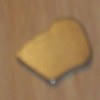 |
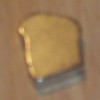 |
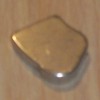 |
 |
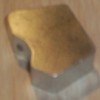 |
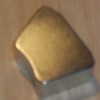 |
15x20x2mm
|
15x20x3mm
|
17x20x3mm
|
17x22x4mm
|
26x31x10mm
|
30x35x10.5mm
|
Above is shown various ex-hard drive magnet
variations, there are many more.
|
|
A stack of 5 10mm Neo
magnets are almost impossible to seperate. A stack of
10 and you can actually feel the earths magnetic poles
pulling the stack! |
A ring of 10mm Neo magnets alternating
poles assembled on a steel disc gives you the start of
a very powerful axial generator. |
Warnings: These
are not your ordinary old weak steel magnets you usually see.
They are SO strong the larger ones are very hard to pull apart,
and the smaller ones are not much easier. You have to slide
them apart. They are pretty dangerous when they come together.
They can give you a nasty pinch, or jam your fingers between
them - it hurts and can cause a bruise if you are not VERY careful.
Not recommended at all for small children to play with. Also,
if the bigger ones are allowed to snap together, the force can
smash them to bits. Be careful not to allow this to happen,
as small fragments can fly out and get lodged in your eyes.
Also, these magnets are SO strong, they can erase your EFTPOS
bank cards, and blank any other form of magnetic storage, including
video cassettes / tapes, magnetic computer backup media (not
CDs, as they are optical!) Also, if they are bought within a
metre of your TV or computer monitor, they can cause bright
colourful blotches to appear all over the screen. Sometimes
these coloured areas will stay on your screen as you have magnetised
the inside of the screen, and it will have to be professionally
demagnetised with a degaussing wand. Most computer monitors
have a degaussing button you press to clean the picture, this
may have to be performed many times to get the picture colour
back. Standard televisions dont have this feature.
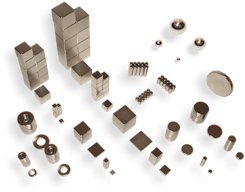
Neodymium magnets available in all shapes
and sizes.
| Obtaining
magnetic iron ore for making your own magnetorheological
fluid or ferrofluid
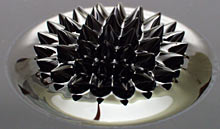
A magnetorheological fluid is a liquid that moves and
hardens near a magnet, and becomes liquid again when
you remove the magnet.
Put some cheap magnets into some clear plastic bags and drag the
bags through some playground sand, or the sand at a beach. Show how the magnets attract
the black iron ore out of the sand. Show how to sprinkle the ore on paper with a magnet
underneath, to create arcing lines of powder that trace out the lines of force of the
magnet. (The plastic bags keep the ore off the magnets, keeping them clean and making
it easier to remove the powder. If the powder does get onto the magnets, use some
sticky tape to remove it.)
The ore that sticks to the magnets in the plastic bags
has quite a bit of sand stuck in it. If you have a mortar
and pestle, or something similar, you can grind it softly
to seperate some more ore that is stuck to the sand.
We can remove the sand by some additional refining.
Make sure the ore is dry. Spread the ore out on a paper
plate, and hold a magnet in a plastic bag over the plate
until a small amount of ore jumps up to the magnet.
Put this ore onto another plate by removing the magnet
from the bag over the plate. Make sure you remove the
magnet straight away from the ore keeping the bag in
between until the ore drops to the plate. The ore will
keep trying to jump towards the magnet until it is far
enough away. Continue until no more ore rises to the
magnet in the bag. Don't get the bag too close to the
plate, since there are many sand grains with ore stuck
to them. We wish to keep only the ore that does not
stick to grains of sand. The ore in the second plate
should be visibly darker than what is left in the first
plate. If you can see a lot of sand in the second plate,
repeat the process, using a third plate.
Put the ore into a small cup. Soft plastic cups work
ok, but an old glass is alot better. The cup should
be small enough that the ore fills it at least a third
of the way up. Add some vegetable oil to the ore, and
stir with a plastic spoon, or another nonferrous object,
such as a iceblock stick. Keep adding oil until you
get a thin black paste. Now gently place a strong magnet
on the side of the cup. It should stick to the side
as it attracts the ore. The ore should become quite
stiff. Tip the cup over another cup to let excess oil
and ore pour off. What remains in the first cup is our
magnetorheological fluid. Dont let this fluid make contact
directly with the magnet as it is quite hard to clean
off.
We are now ready for the fun part. Hold the cup upright,
and remove the magnet. Stir the liquid with the plastic
spoon. It may be a little stiff at first, but will soon
stir easily. Tip the cup a bit to the side, and bury
the bowl of the spoon in the liquid. Now place the magnet
on the side of the cup to stiffen the goop. The spoon
will now stand upright when the cup is righted. The
cup can even be inverted without losing any fluid, although
a little oil may still drip out the first few times.
Set the cup upright again, remove the magnet, and the
solid mass slumps back into the cup, and the spoon falls
over.
Put some fluid into a plastic bag, and let a magnet
stick to the side of the bag. Now you can form the fluid
into shapes by pressing the bag. The fluid will act
like clay, and hold its shape. When you remove the magnet,
the shapes slump into puddles.
Try different mixtures, and use a glass plate with
different magnets underneath.
Magnetorheological fluids are
used in industry for magnetic damping.
Recommended visit http://www.scitoys.com/scitoys/scitoys/magnets/magnets.html
for more information on experiments like this, as well
as good explanations of how magnetism works, and their
main page http://www.scitoys.com/
for lots of other neat science stuff you can do at home.
Search google.com for more information on ferrofluids.
You can buy extremely refined ferrofluid in a small
bottle. |
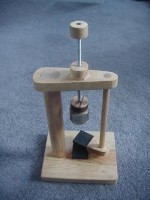 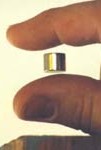
Diamagnetic levitation device, Uses up to 5 10mm Neo
magnets and one very small Neo magnet. Easy to build.
|

This is a Finsrud Perpetual Motion Mobile. Search google
for more info. We have analysed this machine and have
figured out how it is done! |
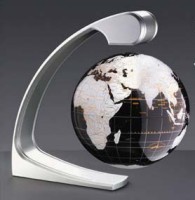
Commercial levitation device utilising Neo magnets and
a small electromagnet. |
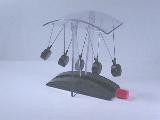
Magnetic swinging mobile, easy to build. |
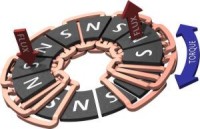
Powerful axial alternators for generating power, as used
in windmills. I am currently manufacturing a prototype
windmill which will be mainly used to keep a home hot
water cylinder boiling, thus reducing mains electricity
usage. |
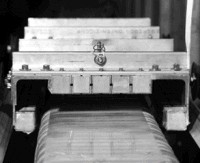
Non super-conducting levitation using Halbach Neo magnet
arrays. Inductive breaking, Eddy currents, alittle harder
to build. |
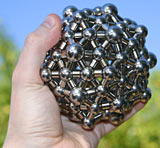
Magnetic structure made from ball bearings and small
cylinder Neo magnets. You can throw this ball around and
it wont break apart, however it is very heavy and could
cause some damage ! |
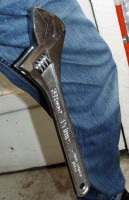
Handy tool belt ! A small Neo magnet in this guys pocket
has enough strength to hold this huge spanner. |
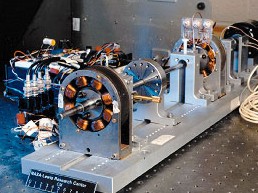
A magnetic bearing experiment. The shaft when spun is
levitated so you have a frictionless bearing. |
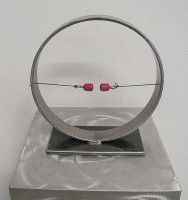
Magnet art piece, about a metre around, made from stainless
steel. You can make variations on this theme. The guy
who made this sold it for US$1500 ! yep, sure did ! |
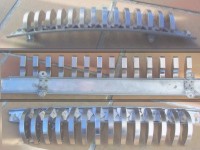
This is 3 different picture angles of the magnetic ground
rake without the handle attached, built using Neo magnets.
Best suited for light digging on a sandy beach. A better
design could be built.
A better version will be similar to a soil plough, where
it digs deeper to find even more lost valuables!
An undersea version could also be made, but you would
want to have a strong line, if the magnet stuck to an
old anchor for example, you might break the line trying
to pull it up! |
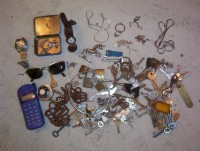
This is what the magnetic rake picked up on a beach.
ALOT of keys, 5 necklaces, a gold ring and a necklace
in a steel case. (lucky - gold isnt magnetic!) Glasses.
another gold ring on a keychain. chains, padlocks, lots
of small iron things, nails, rust etc - mostly junk! but
the occasional goodie turns up!
Extremely unfortunate that gold isnt attracted to magnets
by itself ! |
Some other possible uses of super magnets
:
Springless springs - opposing magnets repel
Magic human compass - blindfolded and able to find north or
south pole by feel alone
Hold directions to my motorcycle gastank so they don't come
off at 100kph
Making a muscleman look like a fool by not being able to separate
a silly stack of magnets by pulling them directly apart
Holding my advertising logos on the side of my truck
Quickly erase secure data on old computer hard drives
Quickly erase ANY form of magnetic storage medium, tapes, videos
etc
Magnetic art mobile clockwork and pendulums
Magnetic art decoration, using LOTS of steel balls with magnet
under plate/table
Vibrating super sub-base, have your stereo literally thump the
sound into the air, realistic explosions etc
Safely removing parts from the punch press
Cleaning up chips in the machine shop.
I use them on survey stakes so that metal detectors find them
from a distance.
Diamagnetic Levitation
Violin mute. Put small discs on each side of the bridge to add
mass and quiet the violin.
Slot car traction
Holding down a car cover
Pulling dents
Holds the outhouse door shut
To find steel pennies
Attaching locating transmitters to motor vehicles
Locating property corners
Jewelry clasps
Re-charging my alnico magnets
Hanging tapestries in a warehouse
Hanging art and pictures from the walls
M ount my CB radio under the dash
With one magnet and a ball bearing I remove dents from brass
musical instruments
I put them in my sluice box to seperate the magnetite from the
gold
H olding all the lathe tools to the lathe
Magnetize my tools
A cool clock with ball bearing hands
Magnetic stirring device
Building a chaotic pendulum
Bike light generator
Finding studs through walls, the magnets will stick to the nail
heads
Holding things to the ceiling
Christmas presents
Wind power alternator
Magnetic tumbler for finishing jewelry
Entertaining drunk people
Alleviate joint pain
Hold a small vise down
Picking up nails in the driveway
School class project
Hold lines and tape in place on steel hull when shipfitting.
Retrieving all the tools my helpers drop in the bay. I'm gonna
glue them to their boots and make them walk the bay at low tide.
Cleaning nails from the horse pasture
Oil filter in my motorcycle - attracts all the tiny iron particles
in the oil
Guitar pickups
Attaching certain tools under my hood
Holding the roof down on my shed :)
Holding safety shield on machine tools
Hang skillets
Use for holding Trailer lights on rv towed vehicle.
Levitation
Knife sheaths
For classroom demonstrations and to motivate students to study
electricity and magnetism
Picking my keys and everyone elses out of the bottom of a pond
Treasure hunting
Experimental loudspeakers
Nice big homemade ammeters
Raising the Titanic :)
I invented a system to drasticly improve fuel milage. I stick
a couple on my front bumper. When on the motorway, I accelerate
- into the back of a large semi 18 wheeler. CLUNK- my car becomes
attached. I then turn off my engine. Sure beats cruise control!
A light tap of the brake pedal seperates me. This is really
probably not a good idea to actually do. Please dont try it
!
When camping - I hang my wet clothes from the van to dry, with
magnets.
Cleaning up the microscopic metal fragments in the oil pan in
go-cart racing engines. leave one inside
Small ones make great ear, nose, lip rings, I dont even have
to pierce myself
Breaking all the laws of thermodynamics
Biomagnetic therapy
Car top advertizing signs
Studfinder
Holding sheet metal together for welding
Dampening for seismograph using eddy currents in a block of
aluminium
Hold down a tarp to the roof for a sunshade
Magicians illusions
Dragging lakes for missing keys, lures, jewelry-etc
Use in a woodworking jig.
Hanging tools
Cleaning my fishtank glass - from the outside
Hiding keys and other stuff in my car
Hold string to steel hull of a boat for measurement
Motor experiments
Education
Anti-matter containment :)
Water Conditioning
Diesel purification - better mileage
Longitudinal force experiments
Making your own maglev train
Production jig fixture
Use to retrieve dropped objects in the water, ocean, pond, pool
Erasing tapes
Recharging alnico magnets
Parking lot clean up
Perpetual motion machine
H omemade alternators - for wind or hydro power
Bending cathode rays in an old TV - pretty colourful pictures
(possibly permanently damages TV)
Induced movement of 100 micron paramagnetic beads for biomedical
applications
Erasing my wifes credit cards
Separating magnetic black sand from gold pan concentrates
Setting planar blades
Sticking really BIG THINGS to the fridge
Healing therapy - have been known to cure headaches
Collecting and refining iron ore from beach sand, and making
ferro fluid
More information on magnets
AlNiCo. (Aluminum-Nickel-Cobalt) for medium
strength and excellent machinability. Developed in the 1940s
and still in use today. They perform much better than plain
steel, but are much weaker in strength (lower B, Br and BHmax)
and must be carefully stored since they are prone to demagnetization.
Contact with a NdFeB magnet can easily reverse or destroy the
field of an AlNiCo magnet.
Ferrite (Ceramic). Also known as 'hard ceramic'
magnets, this material is made from Strontium or Barium Ferrite.
It was developed in the 1960s as a low-cost and more powerful
alternative to AlNiCo and steel magnets. Less expensive than
NdFeB magnets, but still very powerful and resistant to demagnetization.
Useful everywhere. Ferrite magnets are lower in power (B, Br,
BHmax) compared to other formulations, and are very brittle.
However, they have very high Hc and good Tc (see below), and
are quite corrosion-resistant. A very cost-effective choice.
 The
biggest differences between ferrite magnets and rare earth magnets
is that rare earth magnets are much stronger. The
biggest differences between ferrite magnets and rare earth magnets
is that rare earth magnets are much stronger.
The intensity of magnetization and the coercive force are elements
determining the performance of permanent magnets. Since rare
earth magnets contain iron and cobalt in the state not containing
oxygen, their magnetization is large. In addition, magnetization
of rare earth magnets has a strong force (coercive force) aligning
the magnetism in one direction, so they are much stronger magnets
than ferrite magnets.
Since they have about 10 times the performance of ferrite magnets
in total energy per volume, rare earth magnets are used for
powerful magnetic circuits that could not be conceived of until
now.
Rare Earths
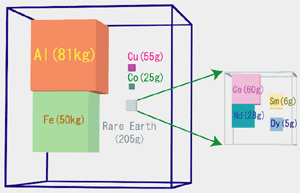 The
metal elements called "rare earths" were discovered
by J. Gadolin of Finland about 200 years ago in 1794. He discovered
yttria (Y2O3) in minerals extracted in Sweden and gave them
the name rare earths (here, earths means alumina, lime, etc.) The
metal elements called "rare earths" were discovered
by J. Gadolin of Finland about 200 years ago in 1794. He discovered
yttria (Y2O3) in minerals extracted in Sweden and gave them
the name rare earths (here, earths means alumina, lime, etc.)
However, the rare earth elements are not actually rare. There
is more cerium (Ce) on the Earth than tin (Sn) and more ytrium
(Y) and neodymium (Nd) than cobalt (Co) and lead (Pb).
Image at right shows amount of various elements contained in
one ton of igneous rock.
 Neodymium
magnets - NdFeB (Neodymium-Iron-Boron). Neodymium
magnets - NdFeB (Neodymium-Iron-Boron).
Also called NIB or NEO magnets they are composed of neodymium
(Nd), iron (Fe) and boron (B) they boast the highest performance
of all rare earth magnets. This formulation is relatively modern,
and first became commercially available in 1984. As neodymium
is relatively abundant, the cost of these devices is also more
reasonable than that of comparable samarium (Sm) magnets. Application
of Nd magnets is expanding rapidly in various fields as their
cost/performance advantages gain recognition.
Corrosion resistance, formerly considered to be a drawback,
has been improved through various types of surface processing,
including nickel (Ni) plating. As a result, these magnets now
deliver optimal performance for virtually any application. NdFeB
magnets have the highest B, Br, and BHmax of any magnet formula,
and also have very high Hc (see below for definitions).In almost
all magnet applications, NdFeB are the best choice for incredible
strength and coercivity at a reasonable price. In power generation
applications, NdFeB magnets can be expected to give 4-5 times
the power output of ceramic magnets.
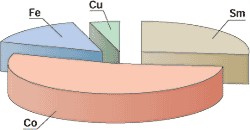 Samarium Magnets - SmCo (Samarium Cobalt).
Samarium Magnets - SmCo (Samarium Cobalt).
The thermal characteristics of samarium magnets are superior
to those of Nd magnets, maintaining high magnetism and reliability
even in challenging high-temperature (high Tc) and opposed magnetic-field
environments. Developed in the 1970s, these were the first so-called
'rare earth' magnets. They are the most expensive magnet formulation
and are almost as powerful as NdFeB magnets. Sm magnets also
offer high Curie temperatures with less coercivity temperature
change-properties unmatched by other magnets.
Magnet Facts and Measurements.
Magnet Strength Measurements (B) The units for measuring the
field strength (flux density) of a magnet are Gauss or Tesla.
1 Tesla = 10,000 Gauss. The Earth's magnetic field is on the
order of 1 Gauss. There are different ways to classify and measure
field strength:
B (flux density): This is the measurement (in Gauss or Tesla)
you get when you use a gaussmeter at the surface of a magnet.
The reading is completely dependant on the distance from the
surface, the shape of the magnet, the exact location measured,
the thickness of the probe and of the magnet's plating. Steel
behind a magnet will increase the measured 'B' significantly.
Not a very good way to compare magnets, since B varies so much
depending on measurement techniques.
Br (residual flux density): The maximum flux a magnet can produce,
measured only in a closed magnetic circuit. Our figures for
each magnet are provided to us by the magnet manufacturer. They
are a good way to compare magnet strength, but keep in mind
that a magnet in a closed magnetic circuit is not doing any
good for anything except test measurements.
B-H Curve: Also called a "hysteresis loop," this graph
shows how a magnetic material performs as it is brought to saturation,
demagnetized, saturated in the opposite direction, then demagnetized
again by an external field. The second quadrant of the graph
is the most important in actual use--the point where the curve
crosses the B axis is Br, and the point where it crosses the
H axis is Hc (see below). The product of Br and Hc is BHmax.
If we have these measurements available, they are provided to
us by the magnet manufacturer. Very complicated and expensive
equipment is needed to plot a B-H curve.
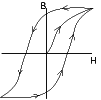 A sample B-H curve:
A sample B-H curve:
Magnet Quality (BHmax): The quality of magnetic materials is
best stated by the Maximum Energy Product (BHmax), measured
in MegaGauss Oersted (MGOe). This is because the size and shape
of a magnet and the material behind it (such as iron) have a
large effect on the measured field strength at the surface,
as does the exact location at which it measured.
All of our Nickel-plated NdFeB magnets are grade N35 (BHmax=35
MGOe) and all of our Gold-plated NdFeB magnets are grade N45
(BHmax=45 MGOe). This gives about a 5% difference in strength,
and a 150% difference in cost. It is wise to balance your magnet
strength needs by cost too. Other magnets are measured the same
way, a grade 8 ferrite magnet (grade C8) has BHmax=8 MGOe.
Coercivity (Hc): This measures a magnet's resistance to demagnetization.
It is the external magnetic field strength required to magnetize,
de-magnetize or re-magnetize a material, also measured in Gauss
or Tesla.
Curie Temperature (Tc): This is the temperature at which a magnet
material loses it's strength, permanently. Another useful number
(if available) is Tmax, the recommended maximum operating temperature.
Above Tmax (around 266 deg. F for most NdFeB magnets) a magnet
will start ot lose its power, and at Tc all power is lost.
Corrosion: NdFeB magnets are susceptible to corrosion. The 'Fe'
in the name stands for Iron, and it rusts! Many of our magnets
come with a Nickel, Zinc, Gold or Epoxy coating to protect them
from moisture. If the coating is damaged, the magnet could rust
if exposed to water or humidity. If this is a concern to you,
you can easily add another layer of protection by dipping the
magnet in epoxy or plastic coating.
Drilling and Machining: Neodymium magnets are by nature very
hard and brittle. Although they can be cut, drilled and machined,
it should ONLY be done by folks who are experienced with ceramics.
If the magnets get over about 260 deg F, they will lose their
magnetism permanently. They are flammable, and it is not difficult
while grinding or machining to get them (or the chips and dusts
from cutting) so hot that they ignite. If they do ignite, the
fumes are toxic and the material burns very fast and hot, like
Magnesium! In our experience any machining of these magnets
should be done with diamond tools under lots of coolant with
good ventilation and the risk of fire in mind.
Patents: NdFeB magnets are a relatively new invention, they
first became commercially available in 1984. All NdFeB magnets
are currently protected under international patent. All of our
magnets are either surplus from various industries, or new,
legal, licensed material.
Manufacturing: NdFeB magnets are complicated to manufacture.
The powdered NdFeB material is packed in molds, then sintered.
The non-magnetized 'magnets' are then shaped to the correct
size and plated. To magnetize them, they are placed in a very
expensive machine that generates an extremely high-powered magnetic
field for an instant, using high-voltage capacitor discharge
and coils. The polarity of the finished magnet depends on how
it was oriented in the magnetizing machine, and how the particles
in the sintered mixture were oriented.
Hope this helped you understand and give you more ideas
for experiments with magnetism.
|



